
How to Use Soil Moisture Sensor: Examples, Pinouts, and Specs
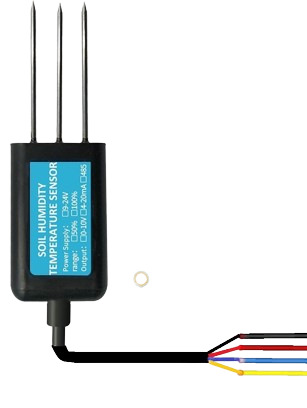
 Design with Soil Moisture Sensor in Cirkit Designer
Design with Soil Moisture Sensor in Cirkit DesignerIntroduction
A Soil Moisture Sensor is an electronic device designed to measure the volumetric water content within the soil. This sensor is crucial for agricultural applications, landscaping, indoor and outdoor gardening, and environmental monitoring. By providing accurate moisture readings, it enables users to make informed decisions about watering schedules, thus promoting healthy plant growth and efficient water usage.
Explore Projects Built with Soil Moisture Sensor
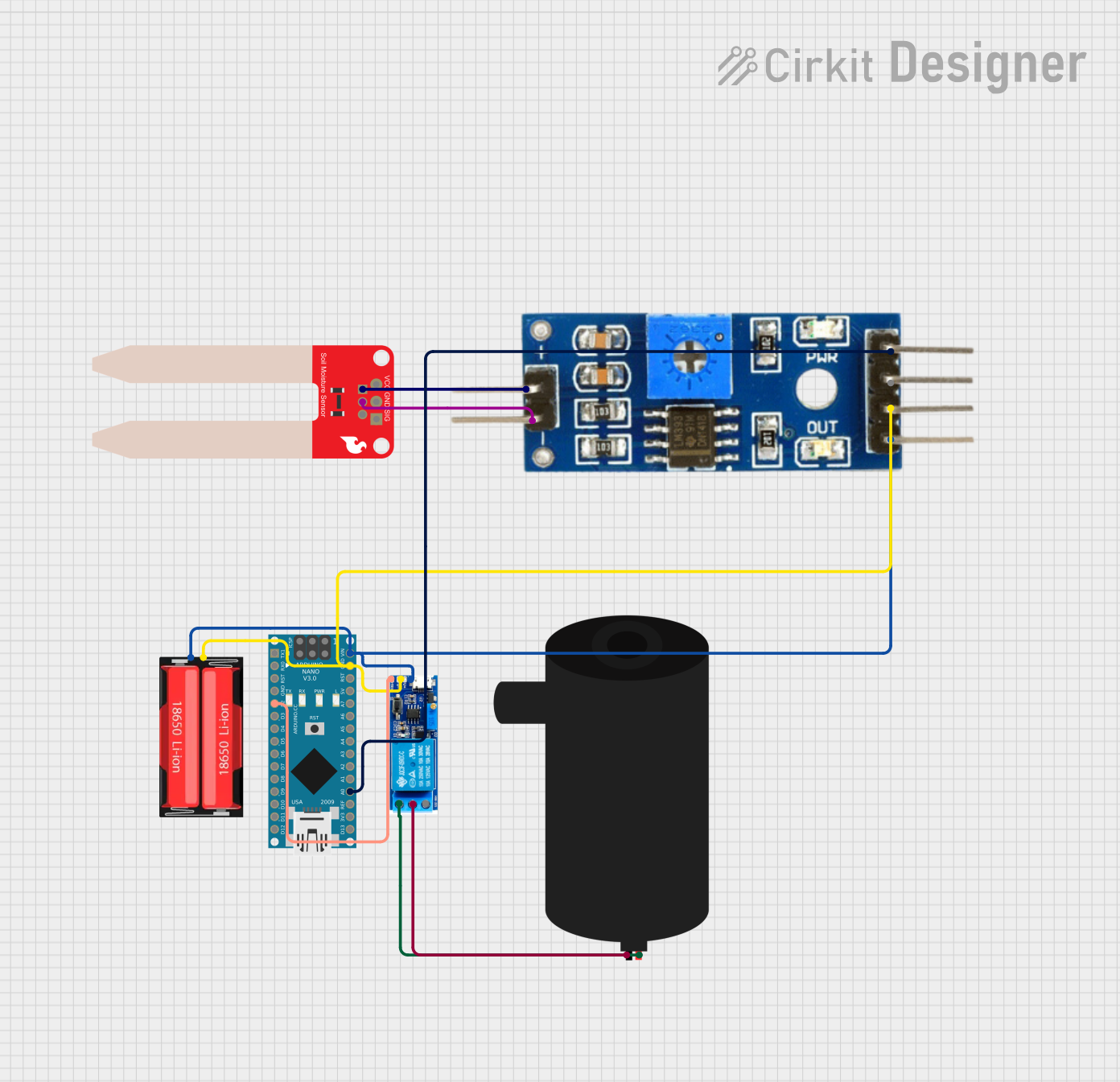
 Open Project in Cirkit Designer
Open Project in Cirkit Designer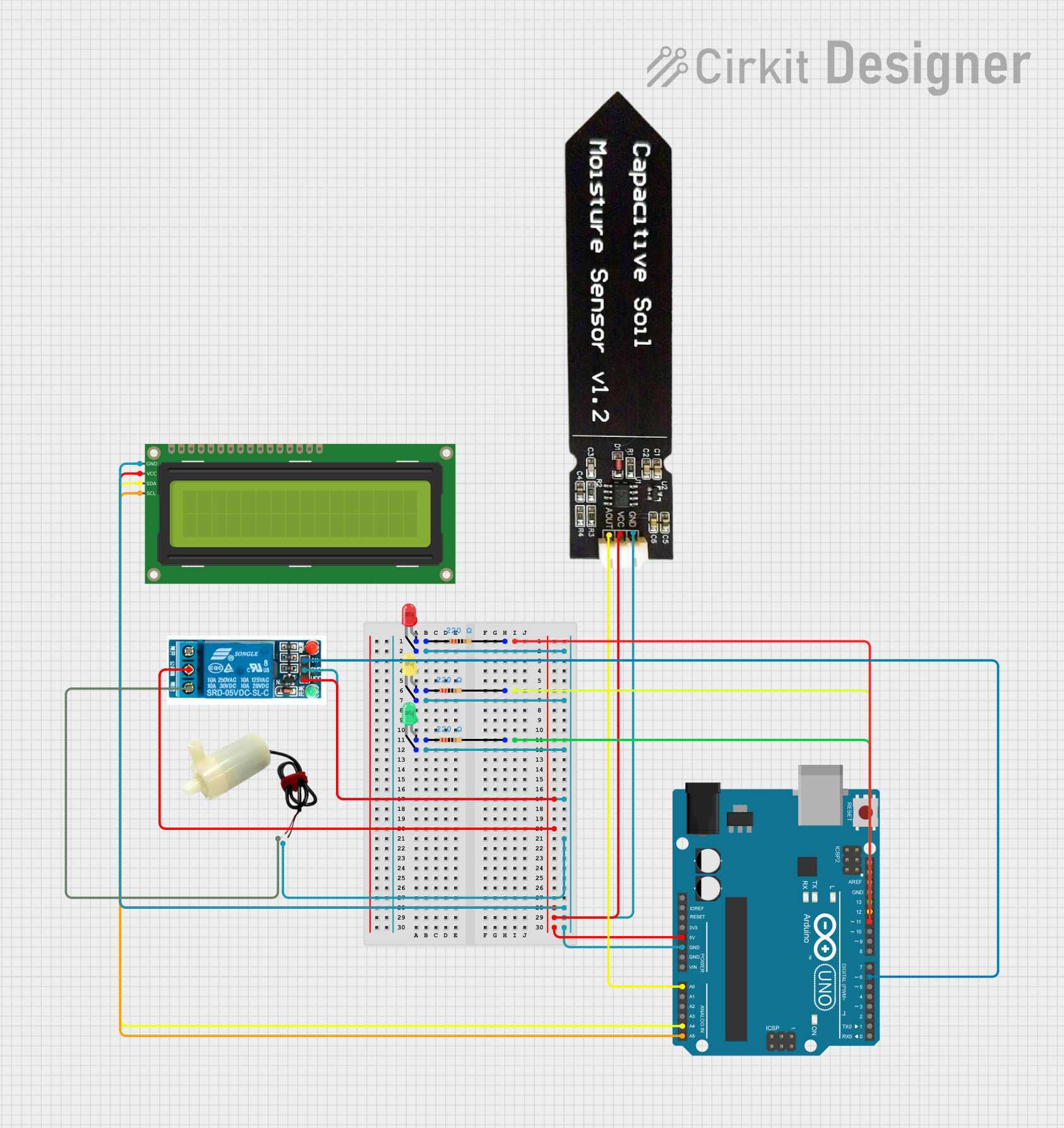
 Open Project in Cirkit Designer
Open Project in Cirkit Designer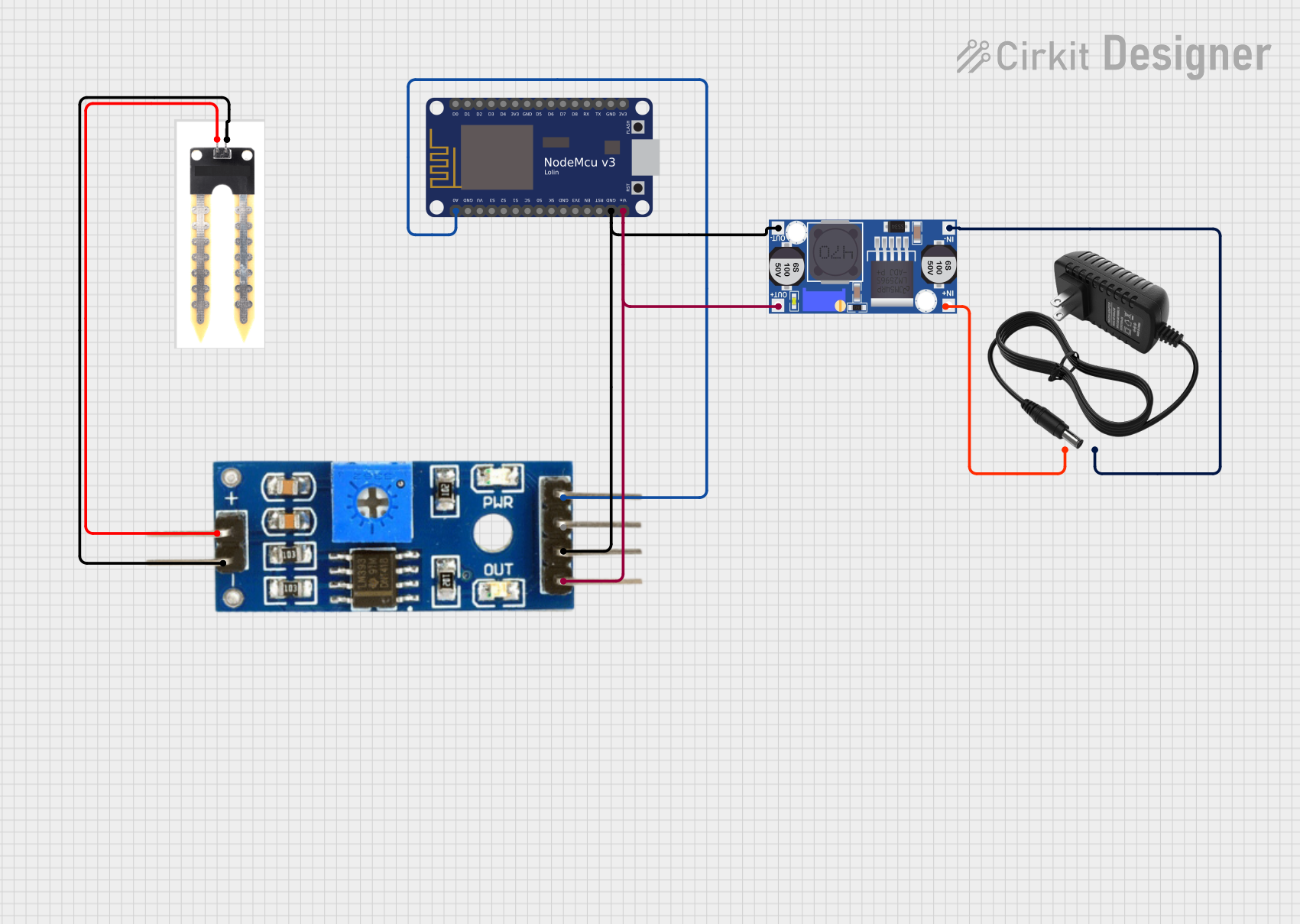
 Open Project in Cirkit Designer
Open Project in Cirkit Designer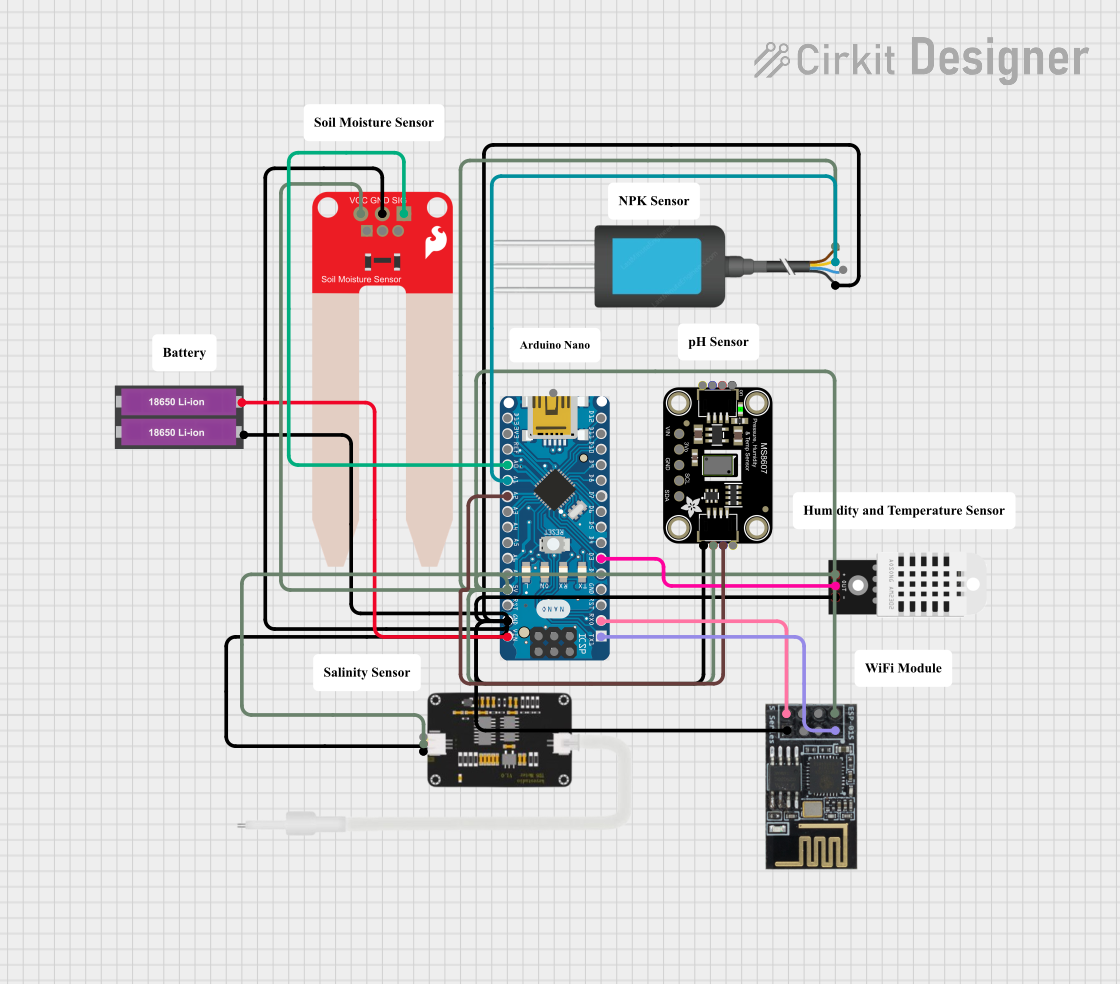
 Open Project in Cirkit Designer
Open Project in Cirkit DesignerExplore Projects Built with Soil Moisture Sensor

 Open Project in Cirkit Designer
Open Project in Cirkit Designer
 Open Project in Cirkit Designer
Open Project in Cirkit Designer
 Open Project in Cirkit Designer
Open Project in Cirkit Designer
 Open Project in Cirkit Designer
Open Project in Cirkit DesignerCommon Applications and Use Cases
- Automated irrigation systems
- Monitoring plant watering levels for gardening
- Environmental science experiments
- Drought alert systems
Technical Specifications
Key Technical Details
- Operating Voltage: Typically 3.3V to 5V
- Current Consumption: 10-20mA
- Output: Analog (0-3V) and Digital (Threshold set by onboard potentiometer)
- Sensing Area: Typically 1-2 inches
Pin Configuration and Descriptions
| Pin Name | Description |
|---|---|
| VCC | Power supply (3.3V to 5V) |
| GND | Ground connection |
| AOUT | Analog output signal |
| DOUT | Digital output signal |
Usage Instructions
How to Use the Component in a Circuit
- Power Connection: Connect the VCC pin to the power supply (3.3V or 5V) and the GND pin to the ground of the power source.
- Output Connection: Connect the AOUT pin to an analog input pin on your microcontroller to read the analog moisture level. For digital output, connect the DOUT pin to a digital input pin.
- Adjusting Sensitivity: Turn the onboard potentiometer to adjust the threshold for the digital output. Clockwise increases sensitivity, counterclockwise decreases it.
Important Considerations and Best Practices
- Avoid submerging the sensor completely in water or wet soil for extended periods to prevent corrosion.
- Calibrate the sensor by checking the output in both dry and wet soil conditions.
- Use a pull-up resistor if the digital output is unstable.
- Keep the sensor clean and dry when not in use.
Example Code for Arduino UNO
// Define the sensor pin
const int MOISTURE_SENSOR_PIN = A0; // Analog input pin that the sensor is attached to
void setup() {
Serial.begin(9600); // Initialize serial communication at 9600 bits per second
}
void loop() {
// Read the value from the sensor
int sensorValue = analogRead(MOISTURE_SENSOR_PIN);
// Convert the analog reading (which goes from 0 - 1023) to a voltage (0 - 5V)
float voltage = sensorValue * (5.0 / 1023.0);
// Print out the value you read
Serial.println(voltage);
delay(1000); // Delay in between reads for stability
}
Troubleshooting and FAQs
Common Issues Users Might Face
- Inconsistent Readings: Fluctuations in sensor readings can be due to loose connections or corrosion on the sensor probes.
- Sensor Corrosion: Prolonged exposure to moisture can lead to corrosion, affecting the sensor's accuracy.
Solutions and Tips for Troubleshooting
- Ensure all connections are secure and free from corrosion.
- If the sensor is not responding, check the power supply and ensure it is within the specified voltage range.
- Clean the sensor probes with distilled water and dry them before use.
- Replace the sensor if corrosion is significant or if it has been used extensively in wet conditions.
FAQs
Q: Can the sensor be left in the soil permanently? A: It is not recommended to leave the sensor in the soil permanently as it can lead to corrosion. Remove it when not in use.
Q: How do I know if my sensor is calibrated correctly? A: Test the sensor in known dry and wet soil conditions and adjust the threshold potentiometer accordingly.
Q: Is the sensor waterproof? A: The sensor probe is water-resistant but the electronic components are not waterproof. Avoid exposing the entire sensor to water.
Q: Can the sensor be used with a 3.3V system? A: Yes, the sensor can typically operate at 3.3V, but check the specific model's datasheet to confirm.